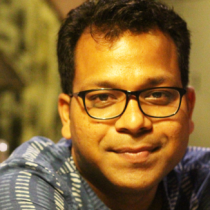In the last five years of the 2010s, more Indian tech startups have been ‘born global’ and expanded internationally than any other time previously in history. This has been accompanied by a trademark shift in the historical founder mentality of establishing in India and scaling outside to one in which global expansion is a part of the business plan even in early rounds of funding. Liquidity and access to knowledge from a global ecosystem have created an environment in which many founders think globally’ even in the early days of product development. As technology becomes ‘core’ from an enabler, we have seen a proliferation of Indian firms in areas such as Consumer Tech, Fintech, Software/SaaS which have rapidly expanded across the globe.
Historically, while pursuing an international corporate strategy, firms have faced the two-fold challenge of optimizing between the pressure to lower costs while facilitating enough local adaption. Crucial decisions need to be made by senior management in regard to primary geography of focus, determination of target customer and channel strategy, resource allocation, product and service value offerings, brand positioning, and creation of an operating model. From a supply perspective, decisions around geography to source from, cost incurred need to be taken.
Our global expansion work across multiple clients has increasingly reinforced that there are a few key aspects which a startup needs to be clear on before pursuing international expansion:
- Setting the ‘right’ strategy and sequence of priorities
- The objectives of the expansion (strategic/financial) and how progress will be monitored
- Developing the skills (in-house or through external advisory) to plan and execute entry into a new market
- Acknowledging the differences in the target geography in terms of culture, product and regulation
- Identifying a strong team which will ‘own’ the success of the international expansion
For enterprises that have been successful in India, a product or market myopic view i.e the assumption that products and services that have been successful in the domestic market will be equally successful in the new geography is a recipe for disappointment. A leading restaurant and food ordering startup scaled down its operations in multiple international markets after it realized that dine-in was integral to patrons’ daily meal consumption behavior in many foreign countries and the cost of customer acquisition/volumes did not justify the fleet on street deployed by the food tech player.
Given technology startups are always short-staffed in view of the rapid growth they experience, it is also more important than ever to ensure the efficient use of in-house resources to increase the probability of success.
The foray of Indian tech entrepreneurship to foreign markets today has validated one of the key questions which ecosystem stakeholders used to ask in the early years of the last decade “Can Indian tech companies scale?”. Not only have these tech startups grown strongly in India by leveraging favorable demographics and strong GDP or investment growth, but our companies also have today created a virtuous cycle of repeat entrepreneurs who are more experienced and wiser to successfully make bold bets such as simultaneous multi-country expansion. Not all tech startups are created equal and today we increasingly see numerous B2B Global businesses – built from India for the world.
India is today the third largest startup ecosystem in the world – what makes Indian startups uniquely poised to scale globally compared to peers in other ecosystems are some key tailwinds:
- India itself is a megadiverse country. The presence of multiple income segments across different tiers of cities each characterized by state and city-specific nuances is a litmus test faced by any ‘big-enough’ startup. This is because what works in Mumbai will need tweaks for Jaipur and you may actually have to do significant changes to sell in Coimbatore.
- Our pool of graduating engineering talent (15L+) is one of the largest in the world. Though we can surely do with improving the quality of a large number, the access to fresh talent armed with the latest technical skills in areas such as AI, ML provides a competitive advantage to India-born enterprises.
- We are the world’s second-largest English-speaking country and we consume offerings in English. A product built for India is easily scalable in most parts of the world.
- We have a history of entrepreneurship and establishing businesses globally. India Inc has already traversed the path before.
- The Indian diaspora is everywhere. At 17.5 million or 6.4% of the global migrant population, the diaspora beachhead is large enough for Indian startups to pilot launch in a foreign market, make mistakes, iterate the product before a full-launch to the mainstream population. This is especially relevant in developed markets where the cost of advertising and distribution tends to be very high.
However, the path from domestic dominance to international leadership is littered with thorns and offerings from India to markets abroad have faced challenges. From products being perceived as poor quality, cheap and inferior to services being de-facto assumed to be unreliable esp. by developed country consumers to a general lack of trust due to unrelated issues such as India’s corruption and inadequate infrastructure, scaling an India-born enterprise in foreign markets has never been easy.
The Indian startups that do succeed in successfully establishing a foreign base away from the home market implement the following 10 strategies in common:
- Build the ‘right’ team with a mix of local and HQ country teams. While the local knows new-country market stakeholders, the ex-pat from HQ-country effectively supplements this with corporate knowledge and direction.
- Don’t do everything (customer segments or product categories) at once and gradually scale-up operations from an initial pilot to soft launch to making the full-fledged offering available in the market
- Leverage ‘diasporic synergies’ and use them as a beachhead. By focusing resources on ‘home country customers’ abroad and winning that market first, successful enterprises establish confidence through a demonstration effect before attacking the full new-market population.
- Acknowledge that positive external factors of a new country only set the stage for an international opportunity but it becomes more important than ever to have the right internal pieces in place before going global
- Select adjacent markets to India in terms of ‘psychic distance’. It’s more feasible to develop a company’s internationalization capabilities in locations where the challenge of “foreignness” is less acute before foraying into completely new territory. A leading Indian home improvement player and a digital-first chain of premium fitness centers have successfully established in Singapore and Dubai respectively as their first international markets.
- Build ‘mental latitude to tweak and adapt’ and do ‘everything it takes’ to succeed in the foreign market. The difference in customer behavior and tastes may demand modification of everything from after-sales support and to offering locally customized guarantees.
- Partner with key local companies to forge win-win relationships (learning alliances/co-branding relationships) wherever possible in the value chain. Not only does it enable a new firm to not commit obvious mistakes, but it also focuses on resources and efforts where it is most essential instead of reinventing the wheel.
- Establish a seamless double-loop learning process between the HQ and new country local operations. Going international is a significant ‘coming-of-age’ moment for any fast-growing startup and the best companies establish war-rooms to seamlessly share knowledge and modify strategies in real-time in response to the evolving ground situation.
- Startups, especially those in Consumer Tech, tend to be disruptive in markets or segments where they enter. Once the proposition is validated, ‘localized enough’ and business stabilizes, efforts need to be made on a war footing to keep local copycats at bay. You don’t want to lose in a guerrilla attack by a local competitor who replicates your business model and has government backing. The world’s leading ride-hailing startup was forced to exit China precisely because of this reason.
- And finally, it is important to not be distracted by non-strategic factors. The company’s strategy and problem-solving should be based on what works for the business in the near and long-term, rather than a gamut of quick fixes. It’s more feasible to build pillars in the early days when reputational risk is low.
The above strategies offer emerging Indian tech startups a robust playbook to address the challenges they face and expand beyond the borders of India. When Indian enterprises execute these strategies, global consumers will be sure to welcome Indian products and services into their homes. From Indian startups being globally competitive today in fragments, the 2020s will present a never-before opportunity to build global startups which incidentally happened to be started in India.
Authored by
Madhur Singhal, Leader, Technology and Internet Practice
Sushman Das, Member, Technology and Internet Practice


























